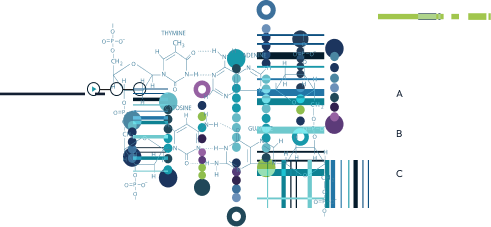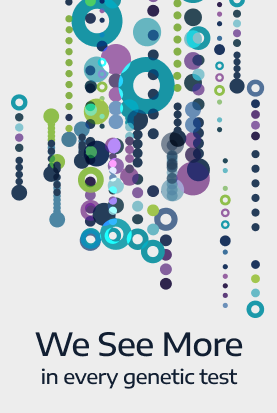News Center

ACMG secondary findings updated list for reporting of secondary findings, for medically actionable genes in clinical exome and genome sequencing
- By Variantyx, Inc
- Posted in Secondary & Incidental Findings
ACMG secondary findings updated list for reporting of secondary findings, for medically actionable genes in clinical exome and genome sequencing.
The American College of Medical Genetics and Genomics (ACMG) recently published updated guidance for reporting secondary findings in the context of clinical exome and genome Analyses1. This updated list now consists of 73 genes for which the ACMG recommends reviewing and reporting of known and expected pathogenic variants. Genes in this list were evaluated for medical actionability of the associated condition.
The Variantyx clinical team continually reviews the ACMG guidelines and recommendations, and updates our secondary findings gene list according to the latest versions available. Hence, patients undergoing testing by either our Genomic Unity® Whole Genome Analysis, Genomic Unity® Exome Plus Analysis or Genomic Unity® Exome Analysis have the choice to opt-in to two additional sets of findings:
- Findings in the genes recommended by the American College of Medical Genetics and Genomics (ACMG)
- Findings in other genes associated with some degree of clinical actionability (see more information on this option here).
In this post we’ll review some of the genes that were added to the ACMG list of genes and their associated actionability that could impact medical management and decision making.
Under cardiovascular indications, the TTN gene was added, due to its association with dilated cardiomyopathy. New information from large population studies showed significant risk of cardiomyopathy for patients with truncating variants; therefore, the ACMG guidelines now recommend reporting of these variants as secondary findings. Clinical intervention based on the identification of TTN variants was found to be beneficial to both patients and their families.
The Secondary Findings Maintenance Working Group also considered adding genes that are related to inborn errors of metabolism, with the following rules: (1) the existence of a juvenile or later-onset form of the disorder and that early or presymptomatic diagnosis of late-onset disease is unlikely for disorders recently added to the Recommended Uniform Screening Panel (RUSP), (2) that the late-onset form should be highly medically actionable, and (3) that there appear to be a significant number of undiagnosed cases in the population(1).
Genes that were added to this category are BTD, which has a high actionability score of treatment with lifelong oral biotin, and GAA (Pompe disease), that was found to have a later-onset, more mild form of the disorder, and has an FDA-approved effective enzyme replacement therapy.
Another very interesting gene that was included in this list is RPE65, which is related to early and adult onset of retinal degeneration. The associated symptoms, such as nystagmus, can start shortly after birth, and progress into decrease in their visual field and deterioration of color vision and central visual acuity, until vision impairment or complete loss. RPE65 has an FDA-approved gene replacement therapy that depends on viable retinal cells, and therefore, it may be recommended to administer this therapy earlier rather than later in the disease course.
Cancer related
| Gene | Condition |
| APC | Familial adenomatous polyposis |
| RET | Familial medullary thyroid cancer |
| BRCA1, BRCA2, PALB2 | Hereditary breast and/or ovarian cancer |
| SDHD, SDHAF2, SDHC, SDHB, MAX, TMEM127 | Hereditary paraganglioma–pheochromocytoma syndrome |
| BMPR1A, SMAD4 | Juvenile polyposis syndrome |
| TP53 | Li–Fraumeni syndrome |
| MLH1, MSH2, MSH6, PMS2 | Lynch syndrome |
| MEN1 | Multiple endocrine neoplasia type 1 |
| MUTYH* | MUTYH-associated polyposis |
| NF2 | Neurofibromatosis type 2 |
| STK11 | Peutz–Jeghers syndrome |
| PTEN | PTEN hamartoma tumor syndrome |
| RB1 | Retinoblastoma |
| TSC1, TSC2 | Tuberous sclerosis complex |
| VHL | von Hippel–Lindau syndrome |
| WT1 | WT1-related Wilms tumor |
Cardiac and/or blood vessel related
| Gene | Condition |
| FBN1, TGFBR1, TGFBR2,SMAD3, ACTA2 , MYH11 | Aortopathies |
| PKP2, DSP, DSC2, TMEM43, DSG2 | Arrhythmogenic right ventricular cardiomyopathy |
| RYR2, CASQ2, TRDN | Catecholaminergic polymorphic ventricular tachycardia |
| TNNT2, LMNA, FLNC, TTN | Dilated cardiomyopathy |
| COL3A1 | Ehlers–Danlos syndrome, vascular type |
| LDLR, APOB, PCSK9 | Familial hypercholesterolemia |
| MYH7, MYBPC3, TNNI3, TPM1, MYL3, ACTC1, PRKAG2, MYL2 | Hypertrophic cardiomyopathyh |
| KCNQ1, KCNH2 | Long QT syndrome types 1 and 2 |
| SCN5A | Long QT syndrome 3; Brugada syndrome |
Genes related to inborn errors of metabolism phenotypes
| Gene | Condition |
| BTD* | Biotinidase deficiency |
| GLA | Fabry disease |
| OTC | Ornithine transcarbamylase deficiency |
| GAA* | Pompe disease |
Others
| Gene | Condition |
| HFE** | Hereditary hemochromatosis |
| ACVRL1, ENG | Hereditary hemorrhagic telangiectasia |
| RYR1, CACNA1S | Malignant hyperthermia |
| HNF1A | Maturity-onset diabetes of the young |
| RPE65* | RPE65-related retinopathy |
| ATP7B* | Wilson disease |
*Will be reported only if two likely pathogenic and/or pathogenic variants are identified (homozygous or compound heterozygous state).
**HFE p.Cys282Tyr homozygous only
-
Haggerty, C. M. et al. Genomics-first evaluation of heart disease associated with titin-truncating variants. Circulation. 140, 42–54 (2019)
